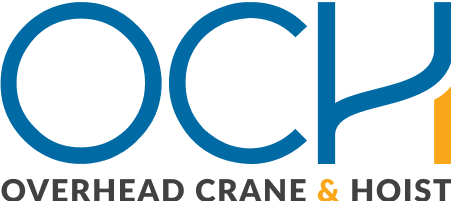However, breakdowns in overhead cranes can be costly, leading to downtime, decreased production, and increased maintenance expenses. In this article, we will conduct a comprehensive cost analysis of overhead crane breakdowns and explore strategies to minimize downtime, ensuring smooth operations and maximizing profitability.
The Cost of Overhead Crane Breakdowns
Lost Production and Revenue
When an overhead crane breaks down, it directly impacts production and revenue. The halted operations can result in delayed deliveries, missed deadlines, and dissatisfied customers. The longer the downtime, the greater the loss of production and potential revenue. Each hour of idle time can translate into significant financial setbacks, making it crucial to minimize breakdowns and their duration.
Repair and Maintenance Expenses
Overhead crane breakdowns necessitate repair and maintenance activities. These costs include replacement parts, labor, equipment rental, and specialized services. Urgent repairs often require expedited shipping of components, leading to additional expenses. Moreover, the longer the downtime, the more extensive the repairs may become, resulting in higher costs.
Safety Risks and Liability
Crane breakdowns pose safety risks to workers and equipment. Malfunctioning cranes can lead to accidents, injuries, and damage to surrounding structures and materials. Ensuring a safe work environment is essential to avoiding potential lawsuits, workers’ compensation claims, and damage to the company’s reputation. Minimizing crane breakdowns helps mitigate these risks and ensures a safer workplace.
Opportunity Costs
Aside from the immediate financial implications, overhead crane breakdowns can also result in opportunity costs. While the crane is out of operation, other projects or tasks that rely on its functionality may be delayed or put on hold. This delay can impact the overall workflow and potentially lead to missed opportunities or lost contracts.
Strategies for Minimizing Downtime
Implement Preventive Maintenance Programs
Proactive maintenance is key to preventing breakdowns and minimizing downtime. Implementing a comprehensive preventive maintenance program ensures that regular inspections, lubrication, and adjustments are performed on the crane components. Regular maintenance can help identify potential issues before they escalate, extending the crane’s lifespan and reducing the likelihood of unexpected breakdowns.
Train and Educate Crane Operators
Well-trained crane operators play a crucial role in minimizing breakdowns. Proper training and education ensure operators are proficient in operating the crane safely and effectively. They should be trained to recognize early warning signs of potential issues, such as unusual noises, vibrations, or performance irregularities. By reporting these signs promptly, necessary maintenance actions can be taken, preventing breakdowns and avoiding extended downtime.
Conduct Regular Load and Stress Assessments
Overloading the crane beyond its rated capacity is a common cause of breakdowns. Regular load and stress assessments should be conducted to ensure the crane is operating within safe limits. This includes evaluating the weight of the loads being lifted and considering the impact of external factors such as wind or temperature. By adhering to safe load capacities, the risk of crane breakdowns can be significantly reduced.
Monitor and Analyze Performance Metrics
Implementing a system to monitor and analyze performance metrics can provide valuable insights into the crane’s health and potential issues. Tracking metrics such as operating temperatures, power consumption, and vibration levels can help identify abnormal patterns or trends. By leveraging data-driven analytics, maintenance teams can take proactive measures to address emerging problems and prevent breakdowns before they occur.
Maintain Adequate Spare Parts Inventory
Having an adequate inventory of spare parts is essential for minimizing downtime during crane breakdowns. Identifying critical components and maintaining a stock of frequently needed parts can expedite the repair process. Collaborating with suppliers to establish just-in-time delivery arrangements can ensure quick access to necessary parts, reducing the duration of crane downtime.
Develop Contingency Plans and Emergency Response Procedures
Even with preventive measures in place, breakdowns can still occur. Developing comprehensive contingency plans and emergency response procedures can help mitigate the impact of unexpected crane failures. These plans should outline the necessary steps to be taken in the event of a breakdown, including contacting maintenance personnel, arranging for repairs, and communicating with affected stakeholders. By having well-defined procedures, downtime can be minimized, and operations can resume swiftly.
Frequently Asked Questions (FAQs)
What are the Common Causes of Overhead Crane Breakdowns?
Overhead crane breakdowns can be caused by various factors, including component wear and tear, inadequate maintenance, overloading, electrical issues, and mechanical failures.
How Can Preventive Maintenance Help Minimize Crane Breakdowns?
Preventive maintenance involves regular inspections, lubrication, and adjustments, helping identify potential issues before they escalate. By addressing these issues proactively, breakdowns can be minimized, and the crane’s lifespan can be extended.
How Can Training and Education Reduce Crane Breakdowns?
Well-trained crane operators can identify early warning signs of potential issues and report them promptly. This enables maintenance teams to take necessary actions, preventing breakdowns and minimizing downtime.
What are the Benefits of Monitoring Performance Metrics?
Monitoring performance metrics allows maintenance teams to track the crane’s health and identify abnormal patterns or trends. By leveraging data-driven insights, proactive measures can be taken to address emerging problems, reducing the risk of breakdowns.
How Important is Maintaining an Inventory of Spare Parts?
Maintaining an inventory of spare parts ensures quick access to necessary components during breakdowns. It expedites the repair process and minimizes the duration of crane downtime.
Why are Contingency Plans and Emergency Response Procedures Important?
Contingency plans and emergency response procedures outline the necessary steps to be taken in the event of a breakdown. Having well-defined procedures helps minimize downtime by ensuring swift actions are taken to address the issue.
Overhead crane breakdowns can be costly, resulting in lost production, increased expenses, safety risks, and missed opportunities. However, by implementing preventive maintenance programs, training operators, conducting regular assessments, monitoring performance metrics, maintaining spare parts inventory, and developing contingency plans, businesses can minimize downtime and reduce the impact of crane breakdowns. Prioritizing these strategies ensures smooth operations, maximizes productivity, and ultimately improves profitability. For more information on preventing overhead crane breakdowns, call Crane 1 Services today.






